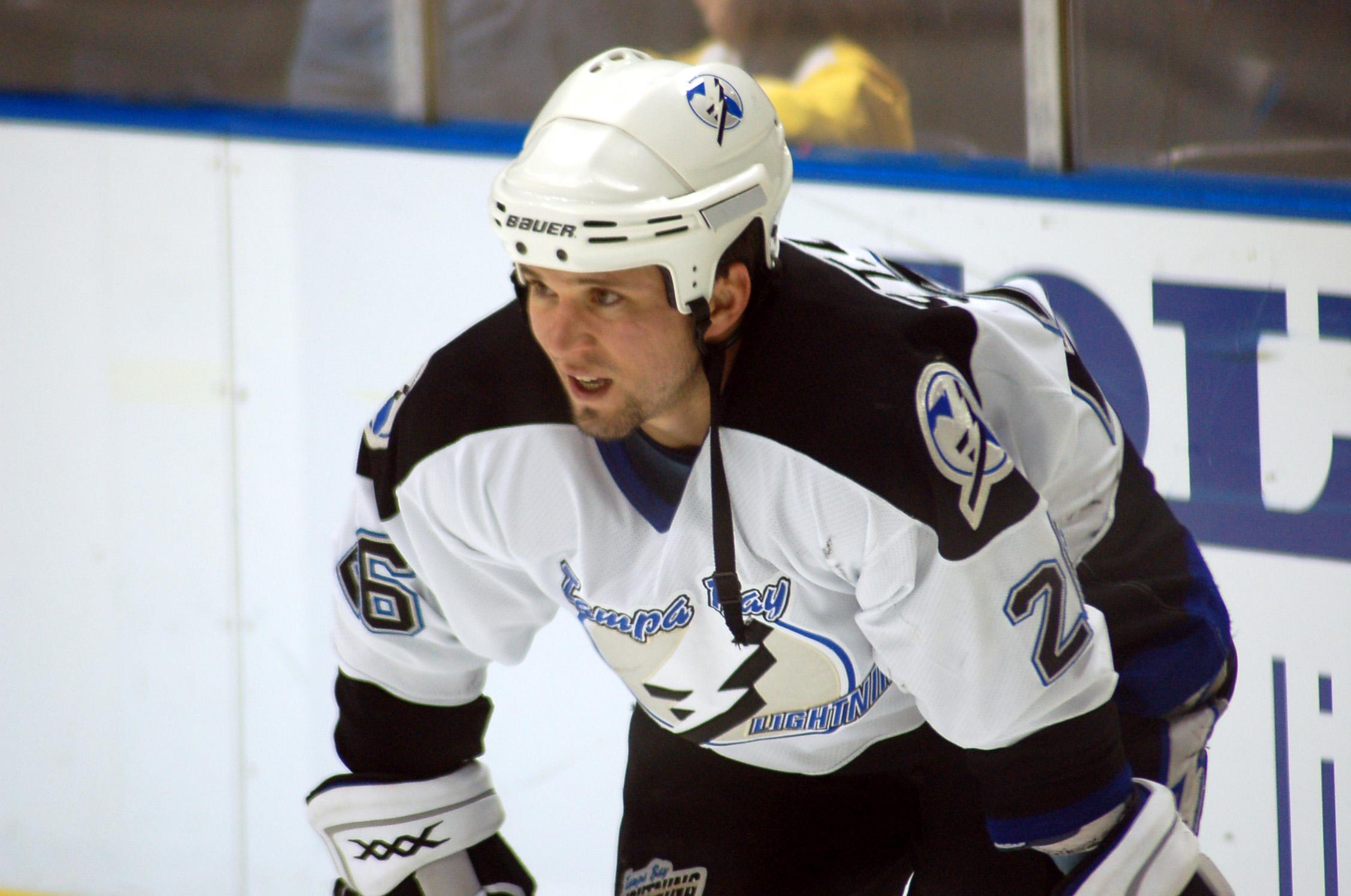In this article, we’ll look at how our response to hardship impacts what happens afterwards. Instead of succumbing to “negative” events, we have the ability to control our reaction and make something positive of it. We’ll use an example from outside the hockey world to really drive this point home – hope you enjoy!
Randy Pausch
Randy Pausch is a former professor of computer science at Carnegie Mellon University (CMU) in Pittsburgh, PA. He passed away from pancreatic cancer in July 2008. Before his death, Randy gave a “last lecture” titled “Really Achieving Your Childhood Dreams” to over 400 students and faculty at CMU. Pausch and Wall Street Journalist Jeffrey Zaslow, who was in attendance that day, turned this lecture into a book, The Last Lecture, . We are going to examine some of the key insights from Pausch’s lecture/book and look at their application to other areas of life and specifically hockey. It is our belief that Pausch lived a life worth learning about. We can apply many of his lessons outside of the computer science and academic worlds.
Experience
“Experience is what you get when you didn’t get what you wanted.” This is one of the many thought-provoking ideas provided in his speech. To think that not getting what you wanted, whatever that may look like for you, can actually teach you something is not new. But calling that “something” you’re taught experience, that’s new – and profound if you ask me. How often do people hear, “you just need more experience and then, you will be great.” For most of us, that piece of feedback is frustrating. We don’t want more experience, we want whatever it is we were going after (spot on the team, job, etc). Pausch encourages people to lean into this and understand that not getting what you want, makes you better. It’s all about our response. Let’s look at how this applies in both hockey and busines.
Application to Hockey
Imagine you are playing junior hockey and looking to make the jump to college. You can play juniors for one more year if needed, but you really want to push yourself and play in college next year. You’re looking for that extra challenge and are eager to make the jump.
Unfortunately, at the end of the season you do not seem to have any college options. While you’ve talked with multiple schools throughout the year, most coaches are telling you they are not ready to make a commitment and hinting that it would be best to play out your final year of junior hockey. You are disappointed, understandably so. You have done everything you could to position yourself to play in college next year and it seems you have fallen short of that goal. Reluctant to quit and not ready to admit defeat altogether, you decide you will play out your final year of junior hockey.
I think at this point it is safe to say that you didn’t get what you wanted. You set out to play in college next year, and you’re going to be back in junior hockey again. Sounds awful, right? Not so fast. If we apply a tidbit of wisdom from Randy Pausch here, we’ll see that what we’re getting is experience. Experience is something we can’t acquire by watching, listening or reading, only by doing.
The Player’s Opportunity to Learn
The player in this hypothetical example has an opportunity to learn from this added experience in their final year of junior hockey. They can leverage the extra practices, workouts and games to make themselves better and prepare for college hockey. While they didn’t get what they initially wanted, they may have gotten something even more valuable. An extra year to develop, grow and learn can be crucial when it comes to player development. Fast forward to the end of the year and this player now has multiple college options in front of them. Compared to the year before, they’re much better off due to the experience gained.
While it is not quite as simple as just “spend one more year and automatically get better”, it is as simple as having a good attitude and being eager to learn. We always have a choice in this matter. Those that decide to use a “negative” (i.e. not getting what you want) as an opportunity to learn and gain experience are positioning themselves to succeed in the long run. One day, when they have accrued enough experience, they may just get what they want.
Application to Business
Now how does this apply to business? Let’s take the example of a young, motivated employee looking to work their way up within their company. They’ve started out shortly after graduating college in an analyst role. They enjoy this role and are trying to learn everyday, but they can not wait to be in a mid-manager position. Somewhere where they’re not in charge of everything, but they’re in charge of something. Instead of always seeking approval from others, maybe in this role they would be dishing out approval while seeking some as well.
After their first year as an analyst, there is a position within the company that opens up at a mid-management level. This seems like great timing as they’ve put in just enough work to show they’re worthy and ready. Interviews start and our analyst is lucky enough to be selected, and make it through the first two rounds. In the last round, they come up just short and are not offered the position. Of course, they’re able to stay in their analyst role with the company. But after making it so far and getting their hopes up, the analyst role seems boring and redundant.
The Analyst’s Time to Respond to Hardship
Just like our player who wasn’t ready to make the jump to college after one year of junior hockey, our analyst is faced with an important decision. They didn’t get what they wanted. Do they take this extra time as an analyst to continue growing and preparing for the next opportunity? Or do they sulk and tell themselves they’re too good to be a lowly analyst again and they deserve better. Again, it’s all about your response – how you use this added experience to your benefit or detriment.
Unlike our hockey player, our analyst slowly begins to pull away from their commitment to the job. Over the next few months, they begin to look for new jobs with competitors in the industry. Ultimately they receive an offer from a competitor in the same industry, offering a little more money for the same role. Their competitor seems to insinuate they’ll be able to move up within the company quicker than at their current employer, so the analyst jumps ship and takes the offer. Had our analyst responded better and committed to learning and growing in the next year, another mid-management position was about to open up. Unbeknownst to him, everyone on the hiring committee considered him a front-runner for this position the second time around.
Our Response Is What Matters
In each of these examples, our fictional characters are faced with a choice: to respond positively and grow, or to respond negatively and stagnate. We saw how the hockey player used the extra year to his advantage and ultimately achieved his goals. Meanwhile, the analyst wasted his extra year and left right before another coveted mid-management position opened up.
Related: The Importance of Failure
These scenarios play out everyday in real life. In hockey, business, academics, you name it. Opportunities to respond constantly faced us. You didn’t make the all star team – do you complain or use it as motivation to prove people wrong? You didn’t get into the best master’s program – do you give up or go where you’re wanted (where you were accepted)? Or you weren’t selected for a promotion – do you give your two weeks or make sure no one earns that promotion over you the next time around?
These examples are only the tip of the iceberg. Urban Meyer, former NCAA DI football coach, coined a saying: “E+R=O.” Event + Response = Outcome. Rarely do we control the Event. We control the Response. This means that we always have the opportunity to impact the Outcome. The more negative the Event, the more positive our Response needs to be.
Post image attribution: By kaatiya, CC BY 2.0 https://creativecommons.org/licenses/by/2.0, via Wikimedia Commons




